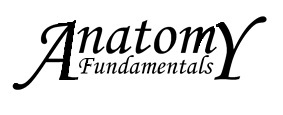
How often have you heard something and thought that maybe the message has lost something in translation. It’s a challenge in communicating to people about how their body works.
I have spoken before about how when you raise your arms above your head, you need to rotate the arm otherwise a lump of bone at the top of your arm bone (humerus) bangs into your shoulder bone (scapula) and your shoulders end up around your ears. For years exercise instructors would tell people to correct this by pushing their shoulders down not realising they were asking them to do something anatomically impossible.
I was treated to an excellent example of this message getting corrupted last week.
In an exercise class, the instructor asked us to take our arm above our head. The way we had approached this in the class meant that our arm was actually rotated anyway. Then they added to not forget to rotate your arm so that your shoulders stay down. At this point they then spun their hand over to face in the opposite direction.
Where to start?
Clearly they had heard about the shape of your arm bone affecting your shoulders. Great!
They didn’t remember what side the lump of bone was (or maybe weren’t told) and so were suggesting the arm be turned the wrong way. Not so great.
They rotated their hand to correct the problem. Doesn’t work!
Why doesn’t it work?
Your forearm is a master piece of engineering that can place your hand in a wide range of positions. That is really the whole point of the arm; to position the hand in space.
You can turn your hand through almost 360 degrees. This is achieved by a combination of shoulder rotation and a twisting action at the forearm in a movement called pronation or supination (depending which way you go). Supination is when the palm is facing up in a way you could put soup in it.
 In anatomy we have this position called ‘anatomical position’. This is someone standing up with their hands by their sides and their palms facing forwards. Anything towards the mid line is called medial, anything towards the edge of the body is called lateral. Your thumb is lateral, your pinkie is medial. Doctors use this language to ensure they are talking about the same part of the body. It does not matter the position you are in, everything is referred to as if it were in the anatomical position. Your thumb will always be lateral, even if you turn your hand around.
In anatomy we have this position called ‘anatomical position’. This is someone standing up with their hands by their sides and their palms facing forwards. Anything towards the mid line is called medial, anything towards the edge of the body is called lateral. Your thumb is lateral, your pinkie is medial. Doctors use this language to ensure they are talking about the same part of the body. It does not matter the position you are in, everything is referred to as if it were in the anatomical position. Your thumb will always be lateral, even if you turn your hand around.
As you can see from the image, pronation and supination are movements that happen around the elbow joint – its actually a little joint at the side where the two bones in the forearm meet each other. The radius (the lateral bone on the thumb side of your forearm) can rotate around the other bone (ulna) allowing the hand to face in the opposite direction.
So, we get in to position in the class and then flip our hand around to face the other way. has it had any effect on our shoulder? No.
Has the instructor covered enough anatomy to know that was going to have no effect on the shoulder?
Does it matter? Maybe not, but it is fairly fundamental. You can’t look after your body to the best of your ability of you don’t know a little bit about how it works.

